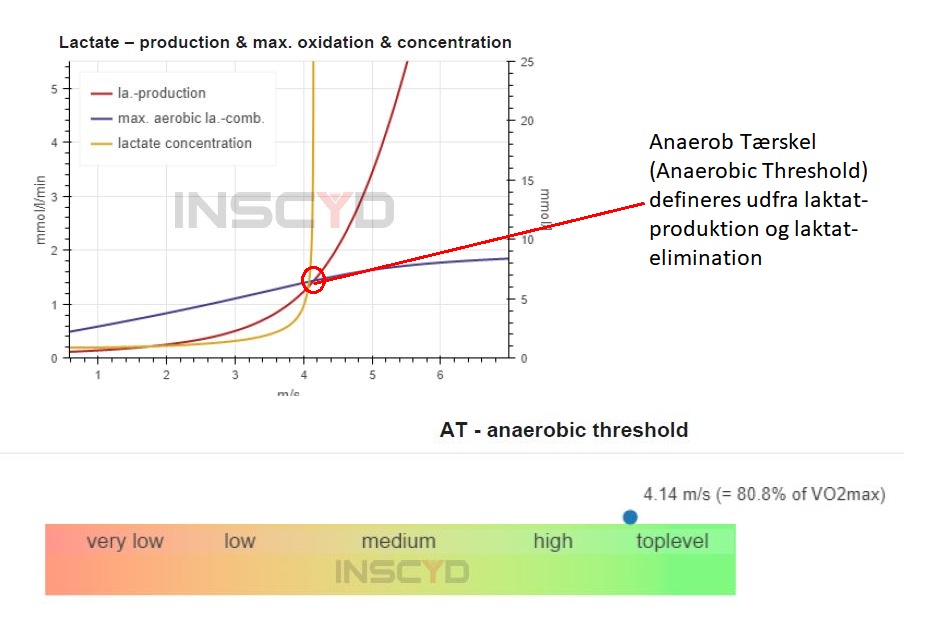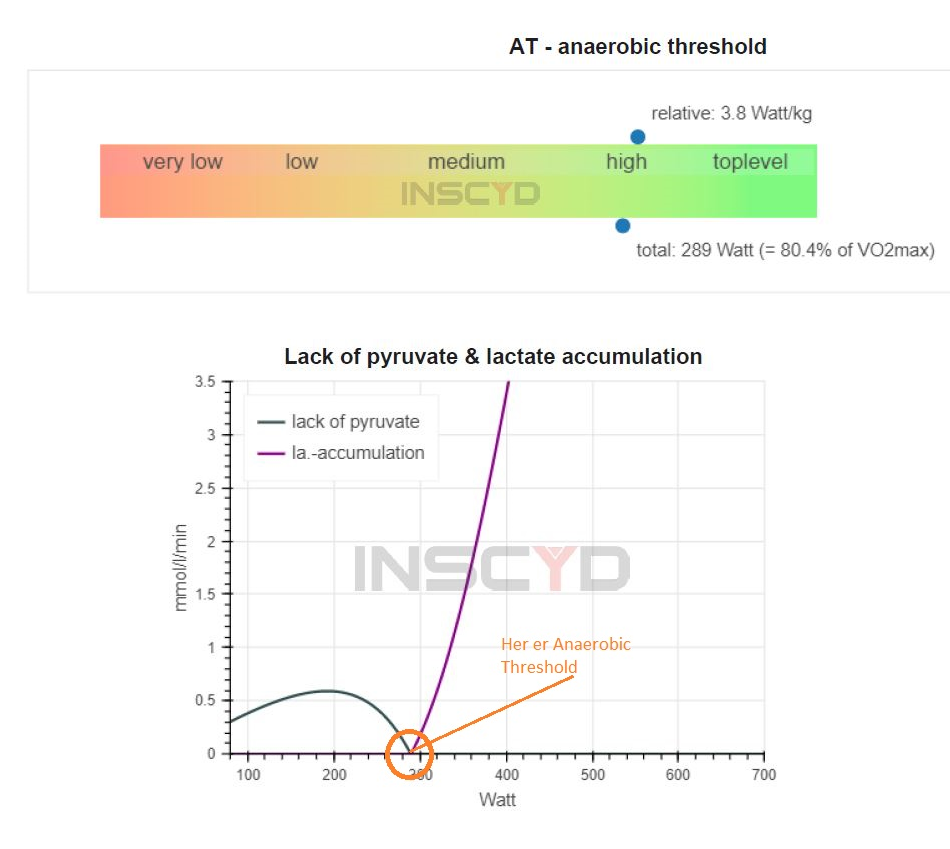Definition of Anaerobic Threshold with lactate produktion and lactate clearance.
Anaerobic threshold (AT) has long been known as one of the most important benchmarks in endurance sports. AT marks the intensity (speed or power) at which the production rate of lactate in the muscle equals the clearance rate of lactate. AT marks the highest possible intensity, which can be sustained without accumulating lactate. The exercise duration in this case is mostly limited by the availability of carbohydrates, which drain quickly at the intensity of AT


